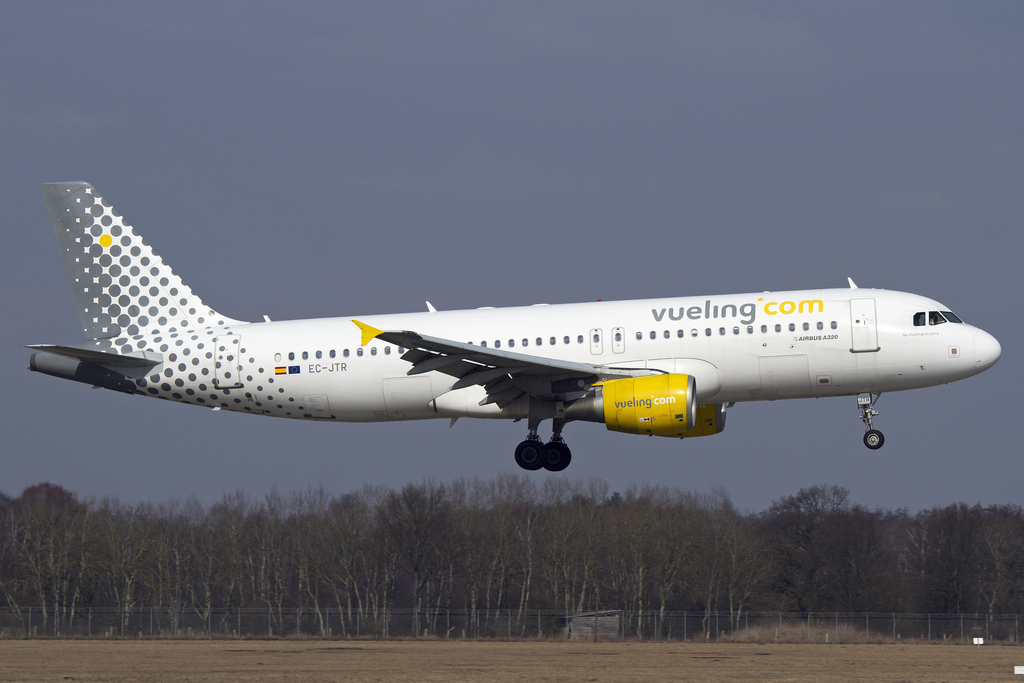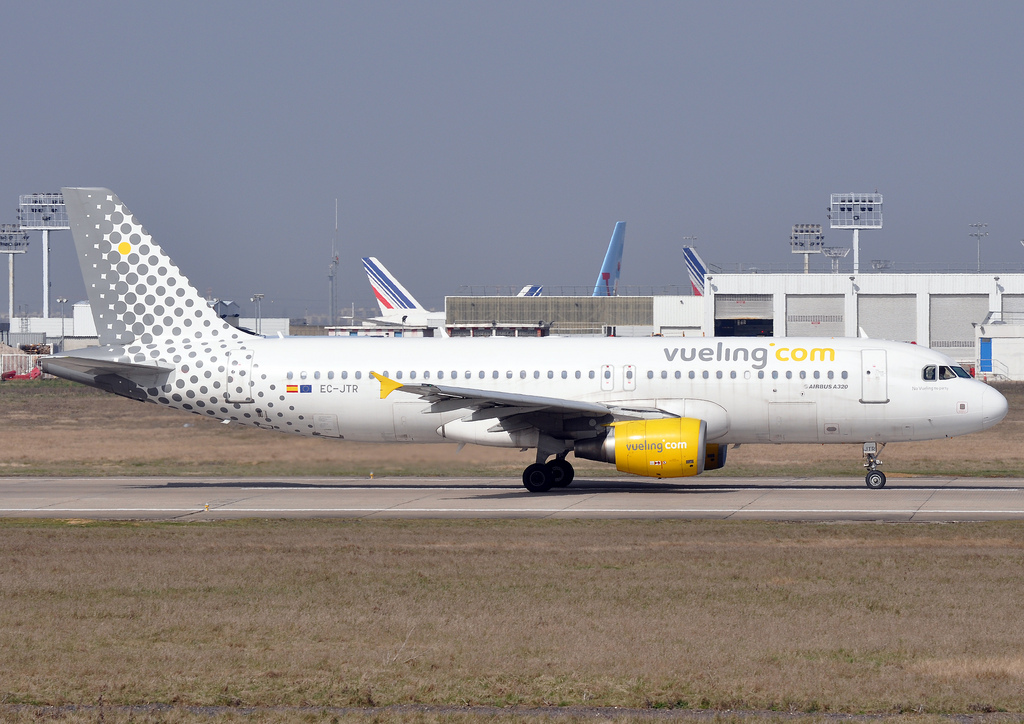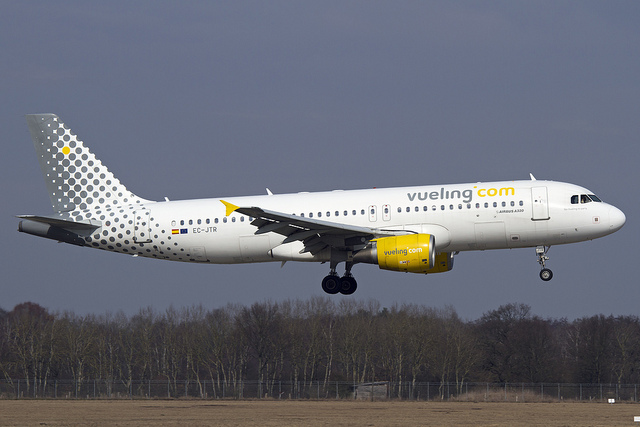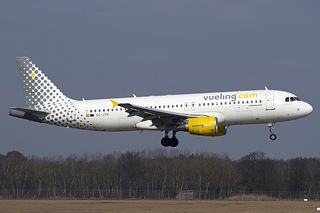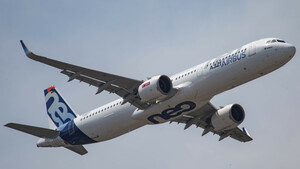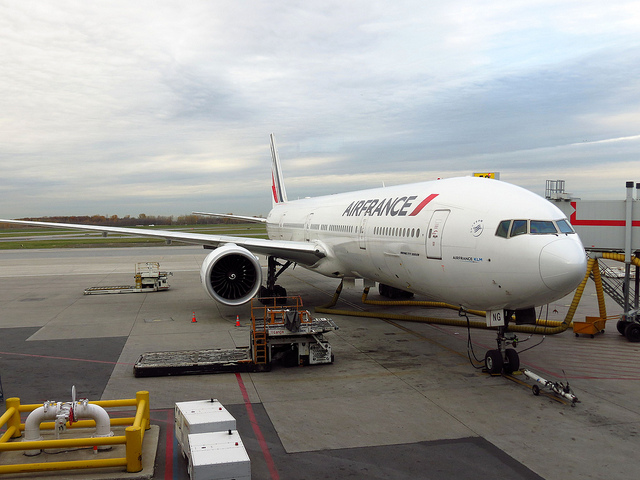Vueling A320 at Barcelona on Jul 16th 2023, rejected takeoff due to bird strike
Last Update: March 12, 2025 / 17:03:06 GMT/Zulu time
Incident Facts
Date of incident
Jul 16, 2023
Classification
Accident
Airline
Vueling
Flight number
VY-2212
Departure
Barcelona, Spain
Destination
Sevilla, Spain
Aircraft Registration
EC-JTR
Aircraft Type
Airbus A320
ICAO Type Designator
A320
On Jul 27th 2023 Spain's CIAIAC reported the captain's airspeed indicator began to deviate from the other airspeed indicators prompting the captain to reject takeoff. All 4 main wheels were damaged and the aircraft was evacuated. The occurrence was rated an incident and is being investigated by the CIAIAC.
On Aug 17th 2023 Spain's CIAIAC reported the captain observed a bird strike, then his airspeed indication dropped by 30 KIAS suddenly. Considering the airspeed unreliable the captain rejected takeoff. The aircraft came to a stop about 600 meters/2000 feet short of the runway end, 3 of the 4 main tyres deflated due to hot brakes. As the aircraft was immobilized, the commander decided to perform an emergency evacuation.
On Mar 12th 2025 Spain's CIAIAC released their final report concluding the probable cause of the incident was:
The investigation has concluded that the incident was caused by a bird striking the captain's Pitot tube, which led to him rejecting the take-off after exceeding the decision speed.
The CIAIAC stated: "the intact lifeless body of a wild 900 g female ringed peregrine falcon was found."
The CIAIAC analysed:
Based on the information extracted from the CVR and FDR, it’s been determined that the engine thrust was as expected for the positions of the thrust levers set by the pilots. It can be concluded that at no time was there a lack of thrust that could have resulted in a decrease in acceleration or speed.
The sudden decrease in calibrated airspeed shown on the captain's anemometer resulted from the bird impacting the probes (or some of them, at least) that supply its air data. From the moment of impact, neither the calibrated airspeed data displayed on the captain's anemometer nor that recorded on the FDR based on air data captured by said probes were reliable.
The FDR of the EC-JTR aircraft does not record the calibrated airspeed data displayed on the co-pilot's anemometer, however, in his statement, he reported that his anemometer did not indicate any anomaly during the take-off run.
The FDR on board the EC-JTR aircraft does record the calibrated airspeed data displayed by the standby anemometer. However, this data was of no use to the investigation as it was not properly recorded, and therefore, the data that was downloaded and validated (both at the CIAIAC laboratory and at the laboratory of the aircraft manufacturer AIRBUS) on the calibrated airspeed registered by the standby anemometer was inconsistent and could not be used in this investigation.
The FDR data shows that the take-off (and its rejection) was performed with the automatic braking system set to the MAX position. During the rejected take-off, the thrust reversers were deployed and engaged in the MAX position.
The automatic braking system was set to MAX position until the end of the recording; it was not deactivated at any time. Under these conditions, the aircraft would be unable to move even if thrust was applied.
2.2. Bird strike, decision to reject take-off and relevant speeds
The following sequence of relevant events has been reconstructed based on an analysis of the data provided by the CVR and the FDR on the EC-JTR aircraft:
Time (UTC) CAS (kt) GS (kt) Comments
07:44:50 100 105 The anemometers of the two pilots show no discrepancy between them
07:44:52 110 115
07:44:54 120 125
07:44:56 129 134 The co-pilot calls “bird”
07:44:57 A thud is heard and the CAS on the captain's anemometer stops being reliable
07:44:58 -- 142 The aircraft continues to accelerate
07:44:59 -- 147
07:45:00 -- 151 The co-pilot calls "V1", the captain calls "stop", and the thrust levers are retarded
The difference between GS and CAS recorded during the 7 seconds prior to the bird strike was +5 kt in favour of GS. Three seconds elapsed between the impact and the retard of the thrust levers, during which time the engines continued to provide thrust correctly, and the take-off run continued on its normal course. It is reasonable to assume that the CAS was still 5 kt lower than the GS during those three seconds.
Thus, at 07:44:59, the GS was 147 kt and the CAS is estimated to have been 142 kt, i.e., coincident with the V1 decision speed. The co-pilot saw this number on his anemometer and then verbalised it18. This verbalisation occurred one second later, at 07:45:00, by which time the GS was 151 kt (the aircraft was still accelerating), and the estimated CAS was 146 kt. The captain decided to abort the take-off by calling "stop" just after this, at which time V1 had already been exceeded. As a result, it was a non-compliant operation.
The captain, who was acting as a pilot monitoring (PM) on take-off, was supposed to be monitoring the flight and engine parameters. When his anemometer displayed an anomalous reading, he should have looked for alternative information on the standby instrument. However, the captain did not look at either the standby anemometer or the co-pilot's anemometer (although the latter was further away) to compare the unexpected data that his anemometer began to display with the other two instruments available before making the decision to reject the take-off. In addition, the engine parameters did not change in any way that would indicate that the engines were no longer working properly. Three seconds elapsed between the bird strike and the thrust levers being retarded.
Deceleration and emergency evacuation
The aircraft performed a strong deceleration and came to a stop about 600 m short of the end of the runway at 07:45:19.
The brake temperatures rose considerably, as was to be expected: at 07:46:01, the brake temperature of wheel 3 was 568ºC, and the lowest temperature (wheel 1) was already at 475ºC. The conditions were met for the protective deflation of the wheels.
A smell of burning rubber was perceived in the cockpit.
The pilots applied thrust to leave the runway, but the aircraft did not move. This was because the automatic braking system was still set to the MAX position. The pilots were not aware of this fact.
The smell of burning rubber, the high temperature of the wheels and the fact that the aircraft could not move prompted the captain to make the decision to evacuate.
...
Incident Facts
Date of incident
Jul 16, 2023
Classification
Accident
Airline
Vueling
Flight number
VY-2212
Departure
Barcelona, Spain
Destination
Sevilla, Spain
Aircraft Registration
EC-JTR
Aircraft Type
Airbus A320
ICAO Type Designator
A320
This article is published under license from Avherald.com. © of text by Avherald.com.
Article source
You can read 2 more free articles without a subscription.
Subscribe now and continue reading without any limits!
Read unlimited articles and receive our daily update briefing. Gain better insights into what is happening in commercial aviation safety.
Send tip
Support AeroInside by sending a small tip amount.
Related articles
Vueling A320 near Amsterdam on Oct 28th 2017, hot brakes in flight
A Vueling Airbus A320-200, registration EC-JTR performing flight VY-8406 from Amsterdam (Netherlands) to London Luton,EN (UK), was enroute at FL220…
Vueling A320 near Barcelona on Jul 2nd 2015, engine shut down in flight
A Vueling Airbus A320-200, registration EC-JTR performing flight VY-3913 from Palma Mallorca,SP to Barcelona,SP (Spain), was descending towards…
Vueling A320 at Tenerife on Apr 7th 2014, engine shut down in flight
A Vueling Airbus A320-200, registration EC-JTR performing flight VY-3215 from Tenerife Los Rodeos,CI to Barcelona,SP (Spain) with 134 people on…
Volaris A21N near Las Vegas on Oct 12th 2025, loss of cabin pressure
A Volaris Airbus A321-200N, registration XA-VSB performing flight Y4-1741 from Las Vegas,NV (USA) to Guadalajara (Mexico), was climbing out of Las…
Vueling A320 at Amsterdam on Jun 4th 2025, gear problem on departure
A Vueling Airlines Airbus A320-200, registration EC-KCU performing flight VY-8364 from Amsterdam (Netherlands) to Malaga,SP (Spain), was climbing out…
Vueling A320 at Barcelona on Apr 29th 2025, smoke in cabin
A Vueling Airbus A320-200, registration EC-OGD performing flight VY-1290 from Barcelona,SP to La Coruna,SP (Spain), was climbing out of Barcelona's…
Vueling A320 near Seville on Mar 11th 2025, first officer incapacitated
A Vueling Airbus A320-200, registration EC-MXG performing flight VY-6015 from Seville,SP (Spain) to London Gatwick,EN (UK), was climbing out of…
Vueling A320 near Barcelona on Feb 14th 2025, loss of cabin pressure
A Vueling Airbus A320-200, registration EC-ODN performing flight VY-1884 from Barcelona,SP (Spain) to Berlin (Germany), was climbing through FL300…
Newest articles
France B773 over Switzerland on Oct 24th 2025, heat in the cabin
An Air France Boeing 777-300, registration F-GZNG performing flight AF-652 from Paris Charles de Gaulle (France) to Saint Denis (Reunion) with 312…
Delta B739 at Minneapolis on Oct 23rd 2025, rejected takeoff due to engine failure
A Delta Airlines Boeing 737-900, registration N829DN performing flight DL-1661 from Minneapolis,MN to Portland,OR (USA) with 187 people on board, was…
Subscribe today
Are you researching aviation incidents? Get access to AeroInside Insights, unlimited read access and receive the daily newsletter.
Pick your plan and subscribePartner

ELITE Simulation Solutions is a leading global provider of Flight Simulation Training Devices, IFR training software as well as flight controls and related services. Find out more.
SafetyScan Pro provides streamlined access to thousands of aviation accident reports. Tailored for your safety management efforts. Book your demo today
AeroInside Blog
Popular aircraft
Airbus A320Boeing 737-800
Boeing 737-800 MAX
Popular airlines
American AirlinesUnited
Delta
Air Canada
Lufthansa
British Airways
